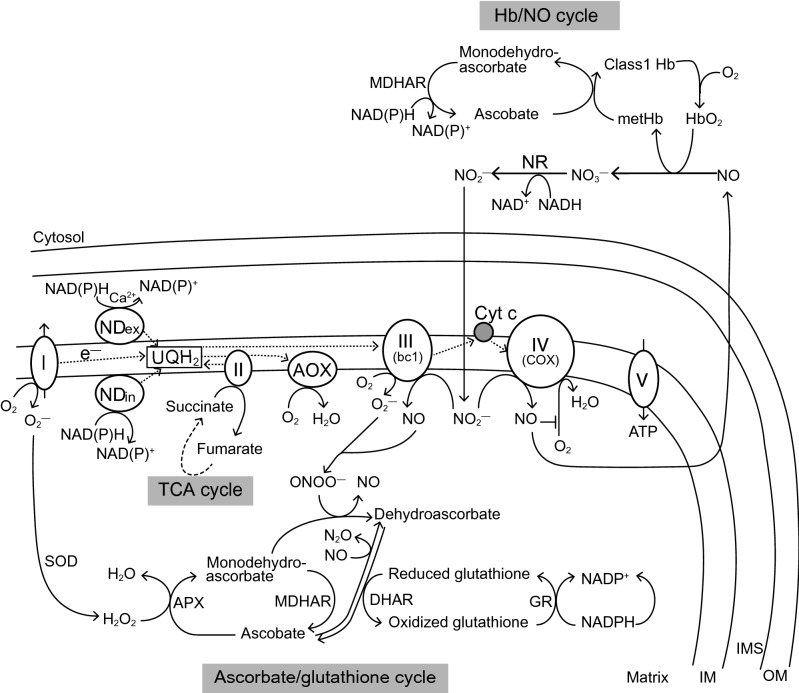Fig. 2.
Production and elimination of reactive oxygen species (ROS) and reactive nitrogen species (RNS) in mitochondria and cytosol. H2O2, NO, O·−2, and ONOO− produced under hypoxic stress conditions are detoxified by the mitochondrial electron transport chain (mETC) and ascorbate/glutathione cycle in the mitochondrial matrix to maintain a redox balance in the cells. The alternative oxidase (AOX) and type II NAD(P)H dehydrogenases (NDs), NDex, and NDin (NDs located at the outer and inner surfaces of the mitochondrial inner membrane, respectively), can consume the accumulated reducing equivalents for maintaining the mitochondrial homeostasis. AOX has lower affinity to O2 than cytochrome c oxidase (COX, complex IV); NDs, especially Ca2+ dependent NDin, have lower affinity to NAD(P)H than complex I and nitrate reductase (NR). In NO scavenging under hypoxic stress condition, ascorbate can contribute to the reduction of NO to N2O in the mitochondrial matrix. Ascorbate is converted to monodehydroascorbate by ascorbate peroxidase (APX), which also involves the scavenging of ONOO− and converting it into NO, The NO generated is resupplied to mETC. Ascorbate can also participate in Class 1 hemoglobin (Class 1 Hb) regeneration from methemoglobin (metHb) in the cytosol. Abbreviations are as follows: Cyt c, cytochrome c; DHAR, dehydroascorbate reductase; GR, glutathione reductase; IM, inner membrane; IMS, inter-membrane space; MDHAR, monodehydroascorbate reductase; NO, nitric oxide; NR, nitrate reductase; OM, outer membrane; SOD, superoxide dismutase; TCA, tricarboxylic acid; UQH2, ubiquinol

